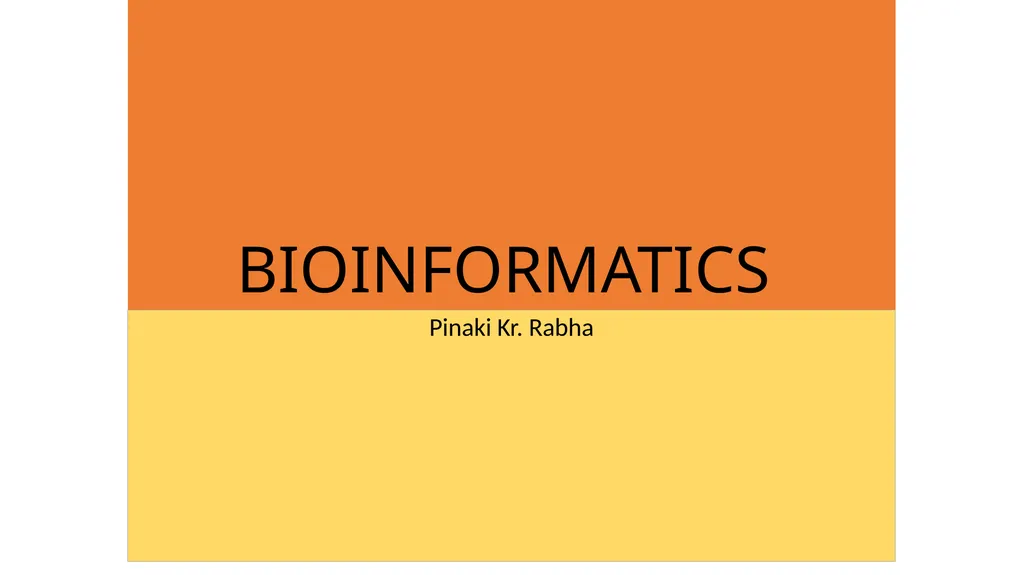BIOINFORMATICS Pinaki Kr. Rabha The term
Author : yoshiko-marsland | Published Date : 2025-05-16
Description: BIOINFORMATICS Pinaki Kr Rabha The term Bioinformatics was first introduced in 1970 by Paulien Hogeweg to refer to the study of information processes in biotic systems While some people define the term as An integration of computer
Presentation Embed Code
Download Presentation
Download
Presentation The PPT/PDF document
"BIOINFORMATICS Pinaki Kr. Rabha The term" is the property of its rightful owner.
Permission is granted to download and print the materials on this website for personal, non-commercial use only,
and to display it on your personal computer provided you do not modify the materials and that you retain all
copyright notices contained in the materials. By downloading content from our website, you accept the terms of
this agreement.
Transcript:BIOINFORMATICS Pinaki Kr. Rabha The term:
BIOINFORMATICS Pinaki Kr. Rabha The term ‘Bioinformatics’ was first introduced in 1970 by Paulien Hogeweg to refer to the study of information processes in biotic systems. While some people define the term as “An integration of computer, mathematical and statistical methods to manage and analyze biological information”, others view it as “The field of science in which Biology, Computer Science, and Information technology merge into a single discipline”. In the present-day context, Bioinformatics involve the use of techniques including applied mathematics, informatics, statistics, computer science, chemistry and biochemistry to solve biological problems usually on the molecular level. Major research efforts in the field include sequence alignment, gene finding, genome assembly, protein structure alignment, protein structure prediction, prediction of gene expression and protein-protein interactions, and the modeling of evolution. Bioinformatics comprises three components. Creation of databases: This involves the organizing, storage and management of the biological data sets. The databases are accessible to researchers to know the existing information and submit new entries, e.g., protein sequence data for molecular structure. Development of algorithms and statistics: This involves the development of tools and resources to determine the relationship among the members of large data sets e.g., comparison of protein sequence data with the already existing protein sequences. Analysis of data and interpretation: The appropriate use of components 1 and 2 to analysis data and interpret the results in a biologically meaningful manner. These includes DNA, RNA and protein sequences, protein structure, gene expression profiles and biochemical pathways. Scope of Bioinformatics: 1.Bioinformatics helps to create an electronic database on genomes and protein sequences from single celled organisms to multicellular organisms. 2. It provides techniques by which three-dimensional models of biomolecules could be understood along with their structure and function. 3. It integrates mathematical, statistical and computational methods to analyse biological, biochemical and biophysical data. 4. Bioinformatics deals with methods for starting, retrieving and analysing biological data such as nucleic acid (DNA/RNA) and protein sequences, structure, functions pathways and genetic interactions. 5. The computational methods in bioinformatics extend information for probing not only at genome level or protein level but up to whole organism level, or ecosystem level of organization. 6. It provides genome level data for understanding normal biological processes and explains the malfunctioning of genes leading to diagnosing of diseases and designing of new drugs. Owing to the wider scope of bioinformatics, one can explore an array of career prospects available in














